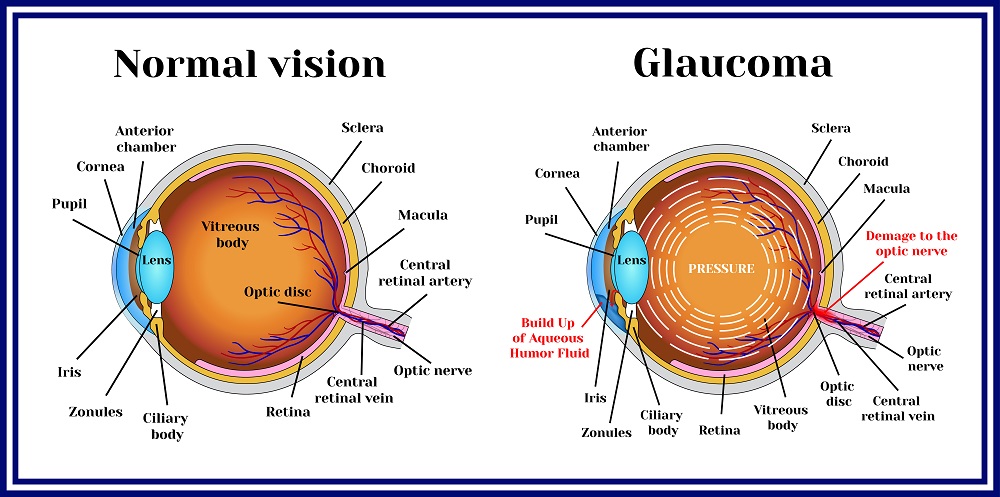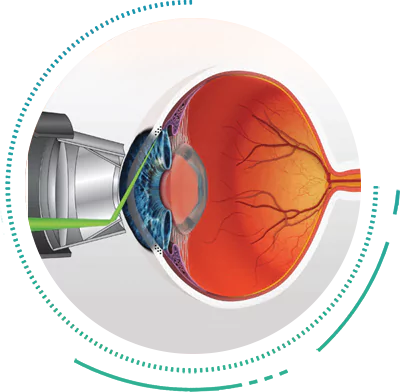Experienced Retina Service Near Me: Comprehensive Eye Treatment Solutions
Experienced Retina Service Near Me: Comprehensive Eye Treatment Solutions
Blog Article
Comprehending the Various Vision Adjustment Procedures Available for Clearer Sight
In the world of vision adjustment procedures, a wide range of choices exist to address refractive errors and supply individuals with more clear sight. From the commonly recognized LASIK surgical procedure to less invasive procedures like PRK and implantable lenses, the area of ophthalmology provides a variety of strategies tailored to suit various requirements and preferences. Each procedure features its very own set of considerations, advantages, and prospective threats. Recognizing the nuances of these vision adjustment techniques is important for making educated decisions regarding one's visual health. Allow's explore the details of these procedures and clarified the path to achieving boosted vision clearness.
LASIK Surgical Treatment
LASIK surgical procedure is a typical refractive procedure used to correct vision issues such as astigmatism, nearsightedness, and farsightedness - glaucoma service near me. This medical method, which means Laser-Assisted in Situ Keratomileusis, aims to improve the cornea to boost exactly how light is concentrated on the retina, inevitably improving vision clarity. During the procedure, a slim flap is developed on the cornea, and a laser is used to get rid of exact quantities of cells to reshape it appropriately. This improving enables light to be properly concentrated onto the retina, fixing refractive errors.
One of the primary benefits of LASIK surgical procedure is the fast enhancement in vision experienced by people. Numerous people discover a considerable enhancement in their vision immediately after the treatment. Additionally, a lot of people report marginal discomfort and discomfort throughout the surgical treatment and recuperation duration. The healing time for LASIK is fairly fast, with several people going back to their daily tasks within a day or more post-operation. Generally, LASIK surgical treatment is a prominent selection for people seeking a long-lasting option for their vision problems.
PRK Procedure
While also an usual refractive treatment, the PRK (Photorefractive Keratectomy) method differs from LASIK surgical procedure in its technique to dealing with vision troubles. In PRK, instead of developing a flap on the cornea, the external layer of the cornea, called the epithelium, is totally removed. This permits the laser to improve the cornea to correct refractive mistakes such as farsightedness, nearsightedness, and astigmatism directly externally.

Regardless of the longer healing time, PRK can generate superb lead to vision enhancement, making it a useful option for those that might not be appropriate prospects for LASIK surgical procedure.
Implantable Lenses
As opposed to PRK where the cornea is improved directly, implantable lenses supply an additional technique for dealing with vision by inserting synthetic lenses inside the eye. This procedure is particularly advantageous for people with high degrees of farsightedness, astigmatism, or nearsightedness that may not appropriate candidates for laser surgical procedures like LASIK or PRK.
Implantable lenses, also called phakic intraocular lenses, job by supplementing the eye's all-natural lens with a fabricated one. retina service near me. These lenses can be placed before the natural lens (former chamber) or behind the iris and in front of the all-natural lens (posterior chamber) By changing the power and positioning of these lenses, ophthalmologists can effectively deal with refractive mistakes and improve aesthetic acuity
One advantage of implantable lenses is that they are detachable and exchangeable, providing flexibility for future modifications. As with any medical treatment, there are risks entailed, such as infection or cataract development. Individuals taking into consideration implantable lenses Look At This should seek advice from an eye care specialist to establish the most appropriate choice based on their individual needs and eye wellness.
Corneal Rings
Corneal rings, also referred to as intracorneal ring segments, are small, clear gadgets inserted into the More hints cornea to remedy vision distortions such as keratoconus. Keratoconus is a problem where the cornea thins and protrudes external, triggering vision to become distorted. The insertion of corneal rings aids to flatten the cornea, enhancing visual acuity and decreasing the uneven astigmatism triggered by keratoconus.
The treatment for placing corneal rings is relatively fast and minimally intrusive, commonly carried out as an outpatient treatment. During the surgery, the ophthalmologist makes a little incision in the cornea and inserts the rings at a specific deepness. Once in area, the rings help to improve the cornea, giving a smoother surface area for light to get in the eye, which can result in clearer vision.
Corneal rings are thought about a reversible procedure, as they can be eliminated or changed if needed. glaucoma service near me. While they might not totally eliminate the requirement for glasses or get in touch with lenses, corneal rings can significantly improve vision high quality and general visual comfort for individuals with keratoconus or other corneal irregularities
Refractive Lens Exchange
Following the correction of corneal irregularities with procedures like corneal rings, one more vision correction method that can attend to refractive errors is Refractive Lens Exchange (RLE) RLE is a surgery that includes changing the eye's all-natural lens with an artificial intraocular lens (IOL) to correct refractive errors such as presbyopia, nearsightedness, and farsightedness. This treatment is particularly helpful for people who might not appropriate candidates for procedures like LASIK or PRK due to factors such as thin corneas or high refractive mistakes.

Final Thought
To conclude, there Find Out More are numerous vision adjustment treatments available to help individuals accomplish more clear view. LASIK surgery, PRK treatment, implantable lenses, corneal rings, and refractive lens exchange are all alternatives that can address different vision problems. It is essential for people to seek advice from with their eye treatment company to establish one of the most ideal procedure based on their certain needs and choices. With developments in technology, accomplishing boosted vision is now a lot more obtainable than in the past.
In the realm of vision correction procedures, a wide range of alternatives exist to deal with refractive errors and provide people with clearer view.LASIK surgical procedure is a common refractive procedure used to correct vision issues such as farsightedness, nearsightedness, and astigmatism.While likewise a common refractive treatment, the PRK (Photorefractive Keratectomy) method varies from LASIK surgical procedure in its method to remedying vision troubles.Complying with the modification of corneal irregularities with procedures like corneal rings, one more vision correction technique that can resolve refractive mistakes is Refractive Lens Exchange (RLE) LASIK surgical treatment, PRK procedure, implantable lenses, corneal rings, and refractive lens exchange are all choices that can resolve different vision problems.
Report this page